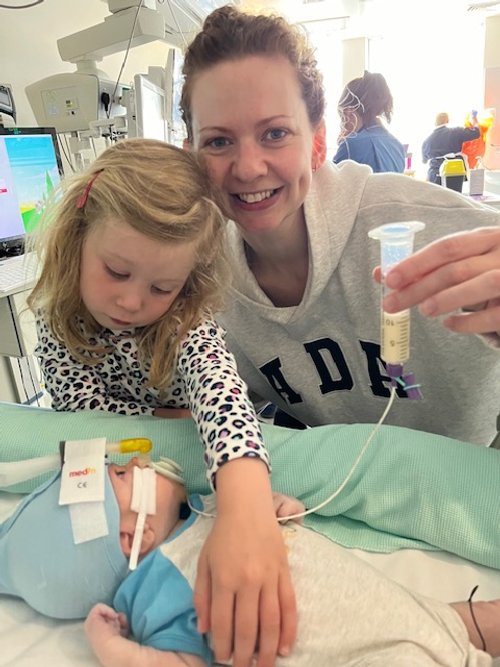Exclusive expressing, a healing breastfeeding experience.
Here’s how I turned struggle into strength.
Breastfeeding can be a deeply personal and emotional experience, and no two journeys are ever the same. For me, the contrast between my first and second experiences with breastfeeding was striking. Even though my son Benjamin never latched or fed directly from my breast, the journey was empowering and healing—a stark contrast to my first experience.
My First Experience: Lessons Learned
When I was pregnant with my first baby, Esme, I told myself I wouldn’t put pressure on breastfeeding. “I’ll just see how it goes,” I said. But when she was born, I realised how much I truly wanted to breastfeed. Unfortunately, it didn’t come easily.
Esme struggled to latch and wasn’t gaining weight. A week in, I was advised to introduce formula, which felt like the beginning of the end for exclusive breastfeeding. My supply dwindled, my confidence plummeted, and we transitioned to combination feeding for five months before stopping altogether.
On paper, this might seem like a success—five months of breast milk is better than none. But trauma isn’t about the events themselves; it’s about how you feel about them. For me, it felt like a failure.
In the years that followed, I became determined to understand why breastfeeding had been so hard. Through research, reading, podcasts, and reflection, I realised several factors had worked against me:
Early-term birth: Esme was born at the early end of full term, research shows this can make breastfeeding harder to establish.
Interrupted bonding: After birth, she was cleaned, weighed, and passed around before feeding—missing crucial early opportunities to latch and stimulate my milk supply.
Lack of support: She was born during the very early days of COVID, and I had no access to in-person breastfeeding support.
Knowing these factors weren’t my fault brought me a sense of compassion for myself, but I still longed for a more positive experience.
Preparing for Benjamin
When I became pregnant with Benjamin, I was determined to take everything I’d learned and create a better experience. I envisioned immediate skin-to-skin contact, early feeding before any disruptions, and a natural, low-intervention birth. But then, we found out he would need to go to NICU immediately after birth for surgery on his digestive system, meaning he wouldn’t be able to feed for weeks.
It was a curveball, but I adjusted my approach, focusing on how to optimise breastfeeding physiology in a different way.
Here’s what I did:
Advocated for myself: I insisted on meeting with an infant feeding specialist before giving birth. She helped me create a plan to establish my milk supply through hand expression and pumping.
Skin-to-skin contact: As long as Benjamin was stable after birth, I prioritised as much skin-to-skin time as possible before his surgery.
Hand expression: Within an hour of giving birth, I began hand expression with the help of an amazing midwife.
Pump schedule: I started pumping every three hours to establish and maintain my milk supply.
Feeding in the NICU
For nearly two weeks after his birth, Benjamin couldn’t have milk and received nutrition through a line. When he could tolerate breast milk, it was fed to him via a tube in his nose. He remained tube-fed for three months, as latching wasn’t an option.
Tube feeding Benjamin became part of everyday life
At one point, after his second surgery, his weight gain became a concern. The medical team suggested supplementing with high-energy formula. Initially, I resisted—it was an emotional request that challenged my desire for exclusive breast milk. Ultimately, I agreed, blending my breast milk with formula to support his recovery.
Finding Healing
Despite the challenges, this experience was profoundly healing. Unlike my first breastfeeding journey, this time, I felt in control. I had a plan, supportive professionals, and the knowledge to advocate for Benjamin and myself.
Even though Benjamin never latched or fed directly from my breast, I felt immense pride in providing for him. Breastfeeding looked different this time, but it was no less meaningful.
A three hourly pumping schedule was relentless but I never doubted myself and was determined to continue.
Reflecting on the Journey
Breastfeeding isn’t a one-size-fits-all journey. Whether it’s exclusive nursing, pumping, combination feeding, or formula, what matters most is how supported and empowered you feel in your choices.
For me, the healing came not from achieving a perfect vision of breastfeeding but from reclaiming my role in the process. If you’re navigating your own breastfeeding journey, know that it’s okay for it to look different from what you imagined—and that every drop of love and care you give your baby counts.


